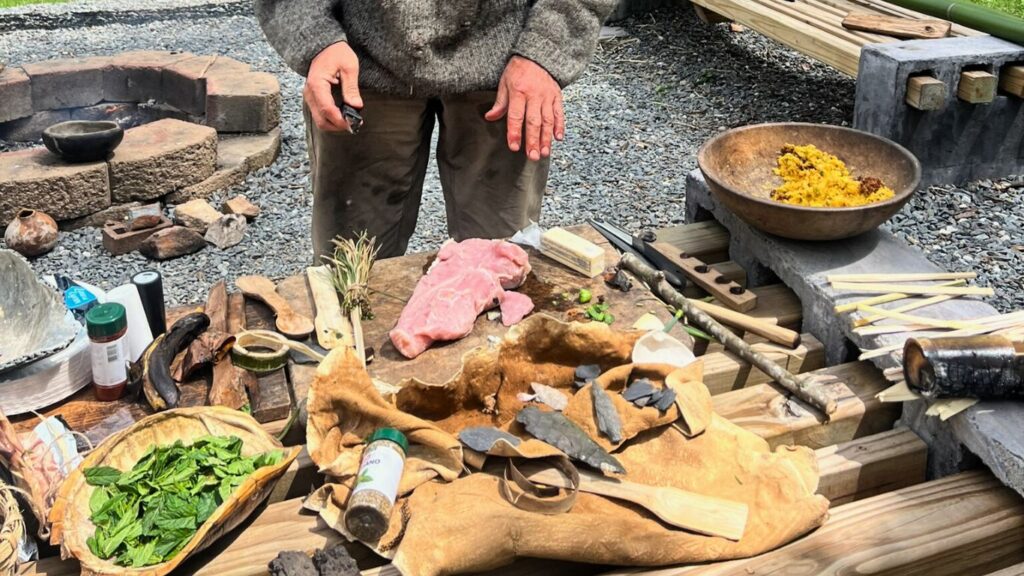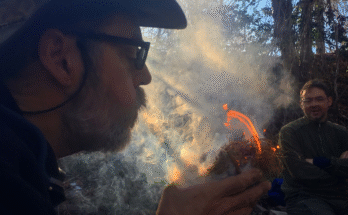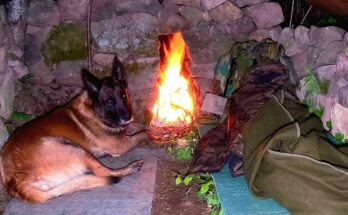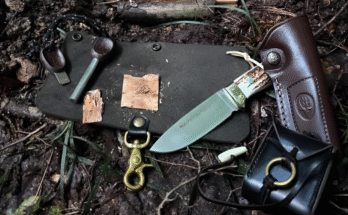However, being prepared for the unexpected is crucial. To help you thrive in nature’s wild embrace, we’ll explore 5 essential wilderness survival skills every outdoor enthusiast should know.
1. Wilderness First Aid:

Accidents happen. Learn basic first aid skills to handle injuries, bites, stings, and other health issues while awaiting professional help. A wilderness first aid course can be invaluable.
- First Aid Training:
- Consider taking a wilderness first aid course or a more advanced wilderness first responder (WFR) course. These courses are designed to teach you essential medical skills in remote settings.
- Primary Assessment:
- Learn how to perform a primary assessment of a person’s condition. This involves checking for responsiveness, breathing, and circulation (ABCs).
- Wound Care:
- Understand how to clean and dress wounds to prevent infection. Carry a first aid kit with supplies like antiseptic wipes, bandages, and adhesive tape.
- Fracture and Sprain Management:
- Know how to stabilize fractures and immobilize injured limbs. This may involve using improvised splints or bandages.
- Burn Treatment:
- Learn how to care for burns, including thermal (heat), chemical, and sunburns. Cooling burns and keeping them clean is essential.
- Insect and Animal Bites:
- Understand how to treat insect stings, snakebites, and other animal bites. Knowledge of local venomous creatures is crucial.
- Hypothermia and Hyperthermia:
- Recognize the signs and symptoms of hypothermia (cold-related) and hyperthermia (heat-related) and know how to treat these conditions, including rewarming and cooling techniques.
- Dehydration and Hydration:
- Identify the signs of dehydration and know how to rehydrate a person safely. Carry oral rehydration solutions in your first aid kit.
- Allergic Reactions:
- Learn how to recognize and manage allergic reactions, especially severe allergic reactions (anaphylaxis). Carry epinephrine if you have known allergies.
- Patient Assessment and Documentation:
- Develop a systematic approach to assessing a patient’s condition and documenting vital information. This is important if you need to relay information to rescuers or medical professionals.
- Patient Comfort and Psychological Support:
- Provide comfort and reassurance to an injured or ill person. Sometimes, psychological support is just as important as physical first aid.
- Practice Scenario-Based Training:
- Regularly practice first aid skills through scenario-based training. Simulate various wilderness emergencies to hone your abilities.
- Carry a Well-Stocked First Aid Kit:
- Always carry a comprehensive first aid kit that includes essential supplies for treating injuries and illnesses in the wilderness.
2. Food Procurement:

While it’s essential to carry provisions, learning how to forage for edible plants and hunt or fish can extend your survival capabilities. Understand local regulations and ethical considerations.
- Emergency Rations:
- Carry high-energy, non-perishable emergency food rations in your survival kit. These can serve as a backup if you are unable to procure food.
- Foraging:
- Learn how to identify edible wild plants, and berries native to the area you are in. Familiarize yourself with the seasons in which these resources are available and their nutritional value.
- Edible Parts of Plants:
- Not all parts of a plant are edible, and some may require specific preparation methods to remove toxins. Learn which parts are safe to eat and how to process them.
- Preservation Techniques:
- Learn how to smoke, dry, or otherwise preserve meat and fish for long-term storage. These methods can help ensure a steady food supply.
- Ethical Considerations:
- Always hunt, trap, and forage responsibly and ethically, taking care to minimize your impact on the ecosystem.
- Local Regulations:
- Be aware of any local regulations or restrictions related to hunting and gathering in the area you’re in. Compliance with these regulations is essential to avoid legal issues.
- Practice Skills:
- Regularly practice your food procurement skills in various conditions to become more proficient. Survival situations are not the time to experiment with new techniques.
3. Wildlife Awareness:

Respect the wildlife and understand how to safely coexist with animals in their natural habitat. Knowledge of animal behavior can prevent encounters that could become dangerous.
- Animal Behavior Observation:
- Learn to observe and interpret the behavior of animals in the wild. Understanding their body language and actions can provide insights into their intentions and potential threats.
- Research Local Wildlife:
- Before heading into a particular wilderness area, research the local wildlife species that inhabit the region. Understand their habitats, feeding habits, and potential risks they may pose.
- Recognize Tracks and Signs:
- Familiarize yourself with the tracks, scat, and other signs left behind by animals. This knowledge can help you identify the presence of certain species and their recent activities.
- Bear Safety:
- If you are in bear country, understand bear behavior and safety measures. Know how to store food and scented items properly to avoid attracting bears to your campsite.
- Snake Awareness:
- In regions with venomous snakes, learn how to identify these snakes and the appropriate precautions to take to avoid snakebite.
- Avoidance Techniques:
- Know how to avoid confrontations with wildlife. Maintain a safe distance, use bear bells or make noise in bear territory to alert animals to your presence, and avoid surprising them.
- Food Storage and Disposal:
- Store food securely in bear-resistant containers or hang it high in a bear bag to prevent wildlife from accessing your food. Dispose of food waste responsibly.
- Leave No Trace:
- Follow Leave No Trace principles, which include respecting wildlife by observing from a distance and not feeding them. Feeding wildlife can disrupt their natural behaviors and create potential hazards.
- Bird Watching:
- Birdwatching can enhance your wildlife awareness. Learn to identify local bird species and their calls. Birds are often good indicators of the presence of other wildlife.
- Ethical Wildlife Photography:
- If you engage in wildlife photography, do so responsibly. Use long lenses to maintain a safe distance, avoid disturbing nesting sites, and do not bait or harass animals for better shots.
- Wildlife First Aid:
- Understand basic first aid for wildlife encounters, such as how to treat animal bites or stings.
- Respect Protected Species:
- Respect laws and regulations protecting endangered or threatened species. Avoid disturbing their habitats and report any sightings to the appropriate authorities.
- Traveling with Pets:
- If you bring pets into the wilderness, keep them on a leash and follow regulations for pets in national parks and protected areas. Pets can disturb wildlife and ecosystems.
- Fish and Wildlife Agencies:
- Contact local fish and wildlife agencies for information on current wildlife activity and any precautions you should take in specific areas.
- Animal Deterrents:
- Carry deterrents like bear spray or noise-makers to discourage wildlife from approaching your camp or trail. Know how to use these tools effectively.
4. Emergency Signaling:

In case of emergency, knowing how to signal for help is vital. Carrying a whistle, mirror, or signaling devices can attract attention and bring assistance to your location.
- Carry Signaling Devices:
- Always carry signaling devices in your survival kit. These can include:
- Whistle: A loud whistle can carry over long distances and is an effective way to signal for help.
- Signal Mirror: A small, lightweight signal mirror can reflect sunlight to create a visible flash that can be seen from miles away.
- Flares: Flares or signal flares are bright, burning devices that create a visible signal, especially at night.
- Emergency Whistle: Some backpacking or survival gear includes built-in whistles or signal whistles with additional features.
- Personal Locator Beacon (PLB): PLBs are satellite-based devices that send distress signals to search and rescue organizations. They are typically used as a last resort when all else fails.
- Always carry signaling devices in your survival kit. These can include:
- Use Auditory Signals:
- In the absence of visual signals, use auditory signals like shouting or blowing a whistle in a rhythmic pattern (e.g., three short blasts followed by a pause) to signal for help.
- Signal Fires:
- Build a signal fire using green vegetation or other materials that produce thick, dark smoke. Signal fires can be seen from a distance, especially in open terrain.
- Ground Signals:
- Create large symbols or messages on the ground using rocks, branches, or other contrasting materials. These symbols can be spotted from the air.
- Use Natural Elements:
- Take advantage of natural elements and patterns to signal for help. For example, arrange rocks or logs into an SOS signal or create a large “X” on the ground.
- Flashlights and Strobes:
- If you have a flashlight or strobe light, use it at night to signal. Shine the light in a repeated pattern, such as Morse code for SOS (three short, three long, three short).
- Whistle Codes:
- Learn and use standardized whistle codes, such as the International Distress Signal (SOS), to communicate your distress effectively.
- Stay Visible:
- Wear bright clothing or use reflective materials on your clothing and gear to increase your visibility, especially in low-light conditions.
- Use Color to Signal:
- Use brightly colored objects or clothing to signal. Hang colorful clothing or objects from trees or structures to make them more visible.
- Stay Near Open Areas:
- If possible, move to an open area with a clear line of sight to the sky to increase your chances of being seen by rescuers.
- Make Noise:
- In addition to using a whistle, use any available tools to create loud noises, such as banging rocks together, blowing a horn, or using a signaling shotgun.
- Signal for Rescue Aircraft:
- If you hear or see an aircraft overhead, use visual signals like waving a brightly colored cloth, signaling mirror, or flashlight to attract their attention.
- Stay Consistent:
- Maintain a consistent signaling routine. Repeatedly signal in regular intervals, especially if you believe there are search and rescue teams in the area.
- Stay Prepared for Long Waits:
- In some cases, rescue may take time. Be prepared for long waits by conserving energy, rationing food and water, and maintaining your signaling efforts.
5. Risk Management:
Finally, a critical skill is risk assessment and management. Recognize when to retreat, change plans, or abandon an expedition altogether. Your safety should always come first.
How to Survive in the Wilderness:
- Surviving in the wilderness is about preparation, adaptability, and respecting nature. Here’s a basic guideline:
- Plan Thoroughly: Research your destination, check the weather, and inform someone of your plans.
- Pack Wisely: Bring essential gear, including navigation tools, first aid kit, fire-starting materials, and ample water and food.
- Stay Calm: In an emergency, maintaining composure is crucial. Panic can cloud judgment.
- Prioritize: In survival situations, focus on the essentials: shelter, water, fire, and signaling for help.
- Stay Put: If lost or injured, it’s often safer to stay where you are. Make yourself visible and wait for rescue.
Wilderness survival skills are not just for the extreme adventurers; they are essential knowledge for anyone who enjoys outdoor activities.


